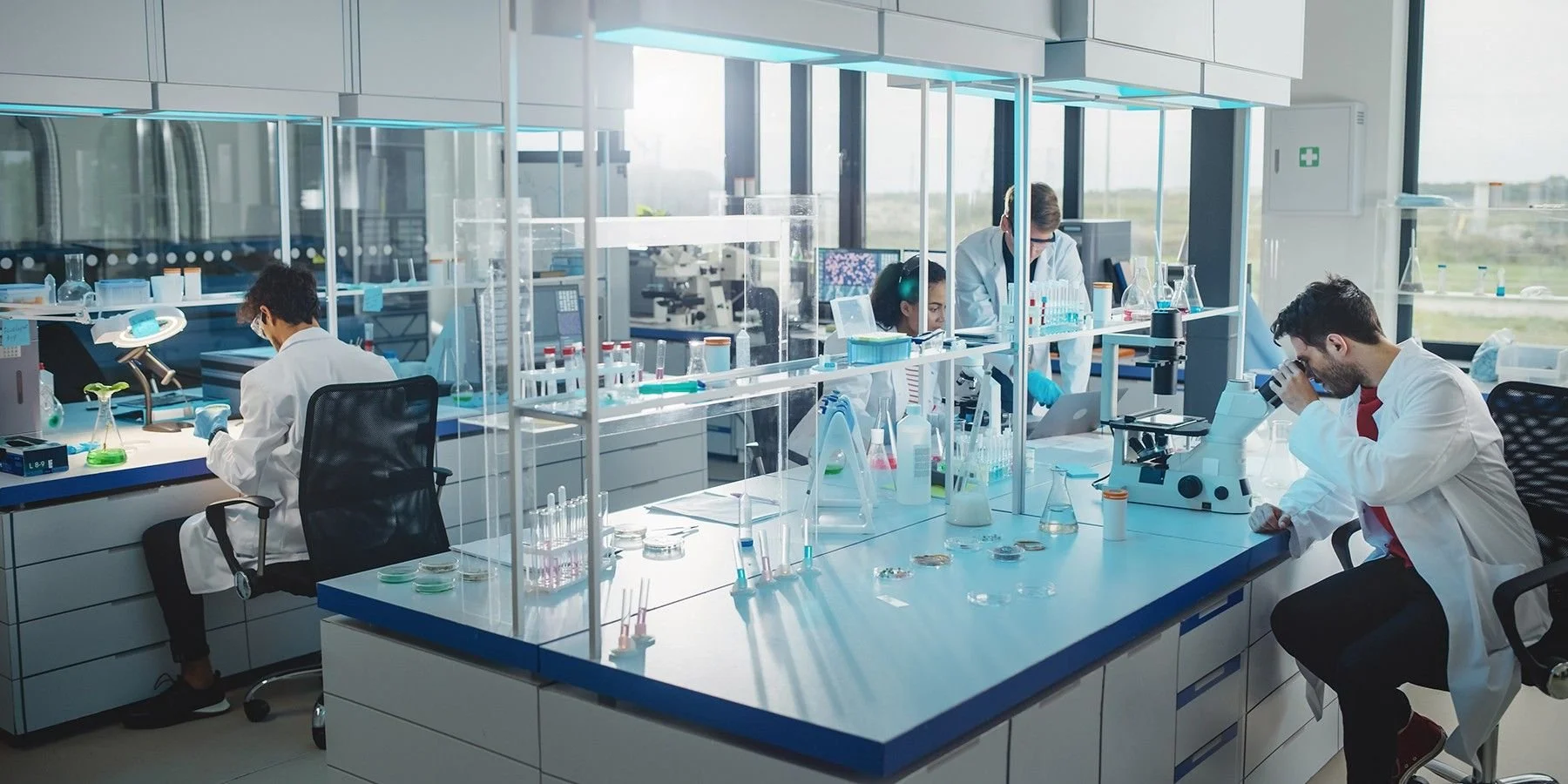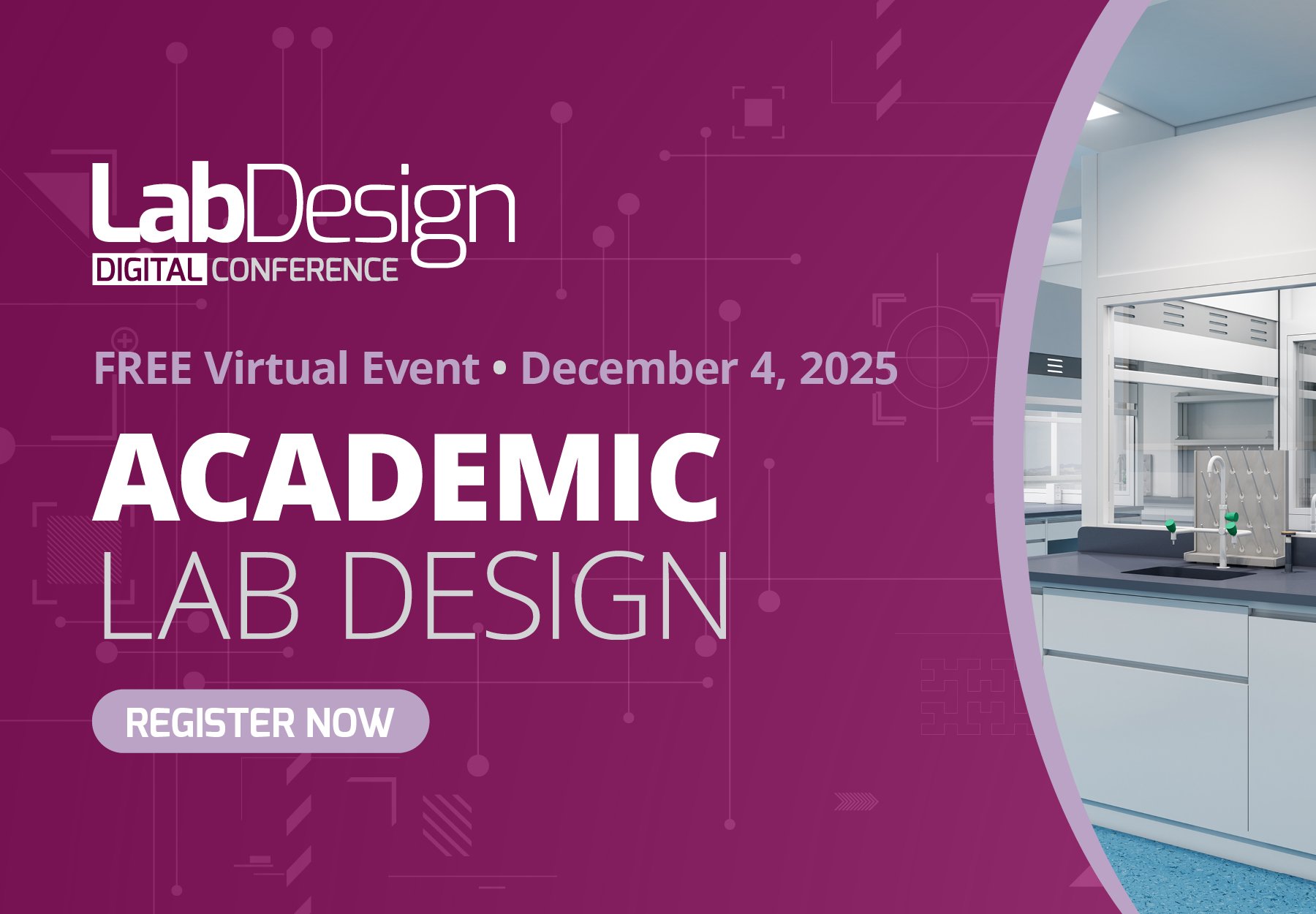
Join us for
the 25th annual Lab Design Conference in 2026!
We’ll see you in Orlando on May 11-14 at the leading business conference
for lab design professionals to learn about sustainable design, industry trends, and more
Featured
Selecting the right site, creating adaptable lab spaces, and planning operations carefully can help emerging biotech teams scale effectively with minimal disruption
A limited number of tickets are available for an exclusive tour of Siemens Energy’s Orlando Innovation Campus, offering 2026 Lab Design Conference attendees a rare, in-depth look at a multidisciplinary engineering environment designed to accelerate collaboration, rapid iteration, and full-cycle technology development
Lab Design has announced its 2026 Digital Conferences lineup, featuring free, AIA-accredited virtual sessions with industry experts, available live or on demand, and offering professionals the chance to attend, gain insights, or participate as speakers
Latest
Hartwell Plc has received planning approval for a £44 million masterplan at Wootton Science Park, southwest of Oxford, to deliver five new flexible lab and workspace buildings for SMEs in life sciences, quantum, AI, and sustainability, with supporting amenities and landscaped areas
Scientific breakthroughs depend on life sciences facilities designed from the inside out for flexibility, adaptability, and early strategic planning, enabling research and manufacturing spaces to keep pace with accelerating discovery and deliver life-saving therapies faster
2026 Lab Design Conference speaker Mukesh Jani, founder and lab director of Torrent Laboratory, shares how he transformed a windowless industrial building into a high-performance lab—exploring the intersection of science, safety, and design that supports both human health and inspiration
Upcoming Events
Now you can register to all upcoming 2026 Lab Design Digital Conferences in one click! Fill out one simple form and enjoy access to all digital conferences for free for the whole year
Join Lab Design for the Casework & Furniture Digital Conference, where industry leaders will share key considerations ranging from material durability and ergonomics to customization options and regulatory compliance
Join Lab Design and our experts for this free digital conference where industry leaders will explore how emerging digital technologies are reshaping every stage of lab planning and design—improving accuracy, strengthening collaboration, and helping teams deliver high-performing spaces that meet the complex needs of modern science
On-Demand Events
Join Lab Design for the Academic Lab Design Digital Conference, where our expert speakers will explore how to create flexible lab spaces that can adapt to evolving research needs and promote interdisciplinary collaboration
Join Lab Design for the HVAC Design for a Sustainable Lab Digital Conference, and discover how to effectively integrate HVAC systems into lab design and construction and plan for their future operation and maintenance
As we prepare for the 2026 Lab Design Conference, join Lab Design for this digital event which will present a deep dive into the essential aspects of laboratory design, construction, renovation, and furnishing
Project Profiles
Ritedose Corporation is investing over $17 million to triple its cGMP lab footprint in Columbia, SC, adding new analytical chemistry and microbiology facilities that enhance efficiency, expand in-house testing capabilities, and support the company’s growing production capacity of 2.6 billion doses per year
Missouri State University has completed an addition to Roy Blunt Hall, marking the first phase of a larger project designed to showcase science while providing flexible, sustainable facilities for future growth
The Applied Research Center (ARC) at Florida Polytechnic University is a 95,000-sf hub for innovation and collaboration, featuring flexible research spaces, teaching labs, and sustainability-focused design that supports the university's growth while fostering industry partnerships and connectivity across campus
Professional Profiles
2026 Lab Design Conference speaker Mukesh Jani, founder and lab director of Torrent Laboratory, shares how he transformed a windowless industrial building into a high-performance lab—exploring the intersection of science, safety, and design that supports both human health and inspiration
Larissa Sattler and her colleagues will present at the 2026 Lab Design Conference on creating truly inclusive, neurodiversity-focused lab environments, sharing insights, case studies, and practical strategies to help research spaces better support focus, comfort, and well-being for all users
Andrea Ingersoll Totte has joined HERA Inc. as a lab planner, bringing a passion for creating adaptable, human-centric, and technology-integrated laboratory environments that foster collaboration, innovation, and sustainability
Op-Ed
To support the vital work of recovering, identifying, and honoring the remains of missing servicemembers through advanced DNA analysis, forensic laboratories must be purpose-built to enable the precise, contamination-free processing of ancient and mitochondrial DNA—making thoughtful lab design an essential foundation for reuniting families with those lost to war
Dr. Shamika Kelley is transforming New Orleans' forensic lab not only through empathetic leadership and wellness-focused culture, but by directly influencing the physical lab space—expanding staff capacity, bringing DNA analysis in-house with advanced equipment, and ensuring the layout supports both operational excellence and human-centered design
Effective job site meetings—though often disliked—are essential for coordinating complex construction projects, helping all subcontractors anticipate delays, voice concerns, and avoid costly consequences through early, candid communication




















